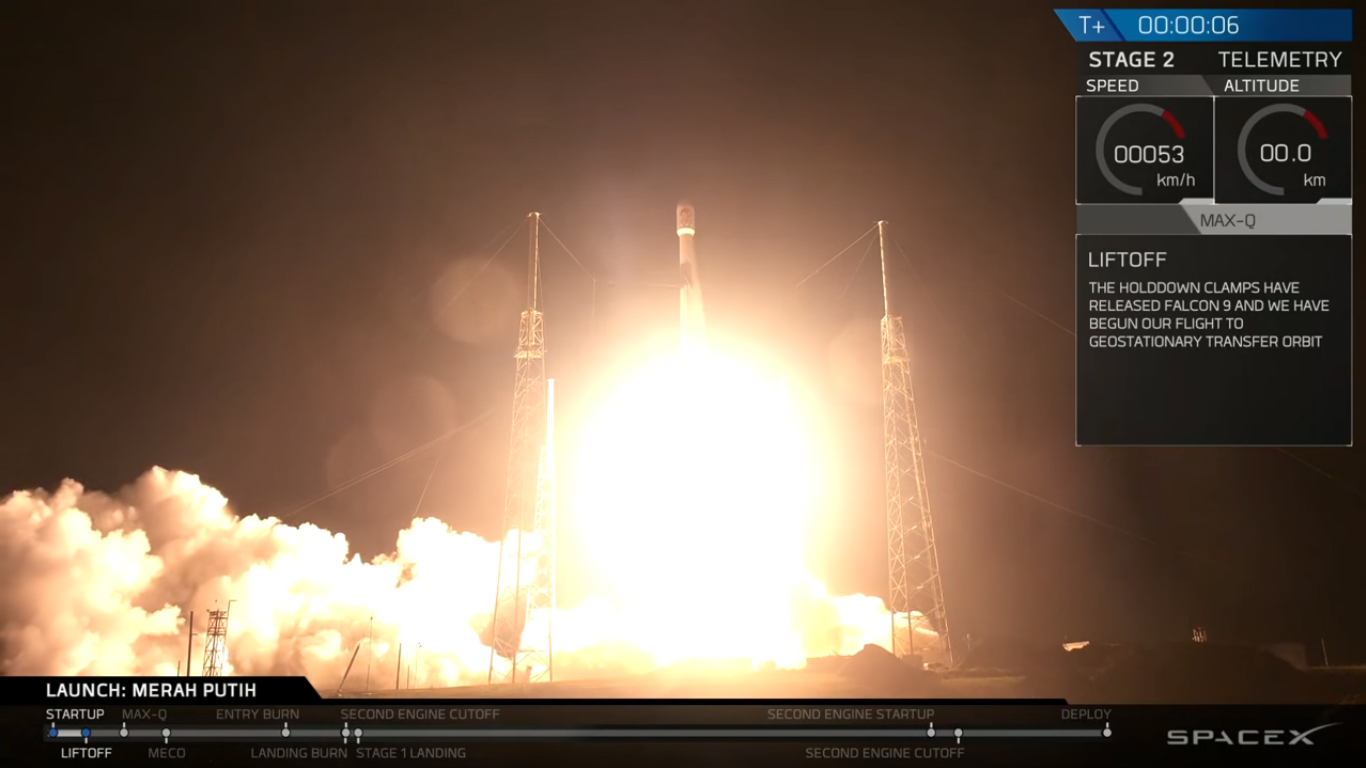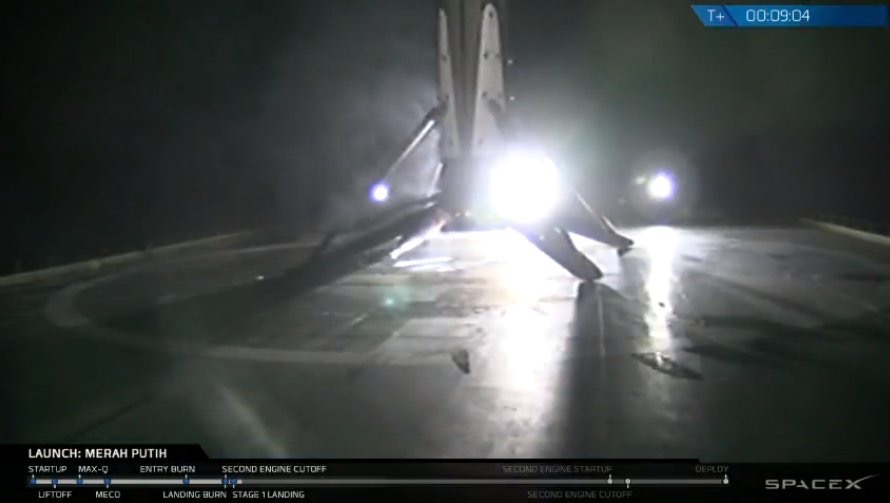SpaceX has checked off another reusability milestone, re-flying the latest version of its Falcon 9 rocket for the first time ever.
The two-stage "Block 5" Falcon 9 launched at 1:18 a.m. EDT (0518 GMT) today (Aug. 7) from Florida's Cape Canaveral Air Force Station, successfully lofting an Indonesian telecommunications satellite to orbit. Less than 9 minutes after liftoff, the rocket's first stage came back to Earth for a vertical touchdown on SpaceX's "Of Course I Still Love You" drone ship, which was stationed a few hundred miles off the Florida coast.
The landing was the second for this particular first stage, which also pulled one off on May 11 during the first-ever flight of a Block 5 Falcon 9. [Photos: SpaceX Launches, Lands 1st 'Block 5' Falcon 9 Rocket]

Today's launch lofted the Merah Putih satellite to a high geostationary transfer orbit. The spacecraft — whose name translates as "red and white," a reference to the colors of the Indonesian flag — will become part of the network run by PT Telkom Indonesia, the nation's largest telecommunications provider.
Merah Putih "will carry an all C-band payload capable of supporting a wide range of applications, including providing mobile broadband across Indonesia and Southeast Asia. The satellite is expected to have a service lifetime of 15 or more years," SpaceX representatives wrote in a mission description.
The Block 5, which has now flown four orbital missions, is the latest (and final) variant of SpaceX's workhorse Falcon 9. The Block 5 is slightly more powerful than its Block 4 predecessor, and it features a variety of upgrades designed to improve its reusability and reliability.
Block 5 first stages are designed to fly 10 times with just inspections between landing and liftoff, and 100 times or more with some refurbishment involved, SpaceX founder and CEO Elon Musk has said. Musk views such rapid and extensive reuse as key to slashing the cost of spaceflight enough to make bold exploration efforts, such as Mars colonization, economically feasible.
Get the Space.com Newsletter
Breaking space news, the latest updates on rocket launches, skywatching events and more!

No Block 4 first stage has ever flown more than twice. (And SpaceX has yet to attempt reuse of the Falcon 9's second stage or its payload fairing, the protective shroud that covers satellites during launch. The company has tried to catch falling fairing halves using a net-equipped boat named Mr. Steven, but such efforts have come up empty to date.)
"It's really better in every way than the Block 4," Musk said during a teleconference with reporters on May 10, a day before the Block 5's debut flight. "This rocket is really designed to be — the intent is to be the most reliable rocket ever built."
It's unclear if any Block 5 first stage will reach 100 flights, because SpaceX plans to phase out the Falcon 9 — and all of its other currently operational space hardware, including the Dragon capsule and the Falcon Heavy rocket — in favor of the company's in-development BFR spaceflight system. The BFR, a huge, reusable rocket-spaceship combo, will be able to ferry people to and from Mars, launch satellites, clean up space junk, perform "point-to-point" passenger flights around Earth and do anything else SpaceX needs it to do, Musk has said.
The Block 5 that lifted off this morning will fly for a third time later this year, if it passes post-landing tests and inspections, SpaceX representatives said during the Merah Putih launch webcast.
Follow Mike Wall on Twitter @michaeldwall and Google+. Follow us @Spacedotcom, Facebook orGoogle+. Originally published on Space.com.
Join our Space Forums to keep talking space on the latest missions, night sky and more! And if you have a news tip, correction or comment, let us know at: community@space.com.

Michael Wall is a Senior Space Writer with Space.com and joined the team in 2010. He primarily covers exoplanets, spaceflight and military space, but has been known to dabble in the space art beat. His book about the search for alien life, "Out There," was published on Nov. 13, 2018. Before becoming a science writer, Michael worked as a herpetologist and wildlife biologist. He has a Ph.D. in evolutionary biology from the University of Sydney, Australia, a bachelor's degree from the University of Arizona, and a graduate certificate in science writing from the University of California, Santa Cruz. To find out what his latest project is, you can follow Michael on Twitter.









